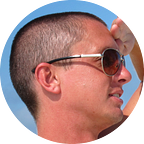What we learnt from our European design hiring tour…
This article is a follow up to: “We’re seeking design thinkers, talented tinkerers and wannabe surfers…”
Last month, we headed off to 4 cities in Europe — London, Amsterdam, Berlin and Stockholm — in search of designers to join the growing design team at Atlassian.
The tour by numbers: 14 days, 4 cities, 2 meet-ups, 4 languages, 2 time zones, 4 Atlassian designers, 3 Talent team reps, 1 marketer, 1 VW Combi, 1 awesome event agency, 8 flights (average p/p), 285 portfolios, 24 interviewed candidates, 6 offers, 5 hires, and 0 arguments amongst the team, 1 white lie (can you guess which stat it was?!)
What did we learn?
With 6 offers and 5 acceptances from a hiring perspective, the tour was a success. We met the target of 6 offers to candidates. We also learned a LOT in this first recruitment tour of the Atlassian design team. We had a retrospective at the end of the tour and the below is a list of some of the key things we uncovered as areas to focus on for future campaigns.
Locations
This was one of our key takeaways. Four cities in two weeks doesn’t sound overly aggressive on paper. This put a lot of strain on the team travelling between places — we landed in a city, barely got unpacked, did our interviews, and then went off to the next location a couple of days later. It was pretty tiring and we had minimal downtime. We spent quite a bit of time travelling from and to airports, on flights, etc. — all time we could have spent interviewing candidates instead. If we did this again, we would condense it down to two locations and fly candidates from other cities in to meet us. We had to do this anyway in a few cases, and it seemed to work really well.
Key takeaway: Really consider the number of locations to visit.
Sweden
According to our data, there is a high percentage of designers that work in Sweden, which is why we decided to visit its capital Stockholm. However, it turns out the quality of life is just too great (Stockholm is beautiful!) and nobody wants to leave :). We probably also didn’t have enough lead time for this location to make our presence known to the relevant people. If we decided on locations for our tour again, we’d rather get interested Swedes to fly in to talk to us.
Key takeaway: Sweden didn’t work out for us. The key take away is that even with strong data, you’re going to face realities on the ground that you can’t anticipate.
Event agency
We contracted a local events agency (Badger & Fox) through Palo Alto-based events company Blue Flame to manage all of the logistics in each location. The team from Badger & Fox were absolutely awesome, looking after us and our candidates so well and lugging a lot of our branded gear across Europe. It allowed us to focus solely on interviewing and assessing candidates. They also made sure that every now and then, we’d be talking about something else than just recruitment over the course of the two weeks!
Key takeaway: Make sure you’ve got someone nearby who knows the local markets you’re visiting really well, and who can solve the logistical challenges for you.
Meetups
We hosted meet-ups in both London and Berlin. These events were awesome to connect with the local UX community. In both locations we spoke to a vibrant mix of about 100 promising designers, and it was a great opportunity to get more insights into the local markets. It also established a few longer-term relationships with designers who may not have been ready to commit to moving countries just yet, but may do so in the future.
Key takeaway: If you’re already going to be half way around the world, Meet-ups are a fantastic way to meet the local community without much added cost or logistics planning required (assuming you’ve also got a stellar events agency lined up).
Interview process
Our interview process was meticulously planned, and this took considerable pre-trip effort from a few key people in the design team. Even though the process was streamlined compared to our usual interviewing process, we still kept the same high quality bar we always apply. We put a much stronger emphasis onto our screening process, which meant that the candidates we ended up interviewing in person were all of a very high quality. We retained the design challenge aspect as the cornerstone of the process: We like to see what it would be like to work with prospective employees as this gives the best insights into technical competencies.
Key takeaway: Make sure your interview process will enable you to make a definitive call on candidates at the end of the process.
Thanks
I would like to thank everyone who submitted a portfolio, came to one of our meet-ups or who we met in person. We were blown away by both the volume and quality of responses to our campaign and of the quality of people we met at interview stage. There are some amazingly talented designers in Europe… well, five less now, thanks to us :)
We are still hiring, so if you would like to join the Atlassian design team check out our open positions.
Welcome to our new hires!
Lastly, welcome to the Atlassian team: Simi, Georgie, Allard, Arjan and Aurelie. We are super excited to have you join the design team and can’t wait for you to start making an impact in Sydney (and, hopefully learning to surf)!
Did you enjoy this post? Want more of the same? Consider following Designing Atlassian.
